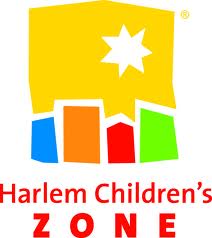Combatting Crime in Harlem: The Harlem Children's Zone
 Harlem, New York, has the reputation of being one of the worst areas for poverty and crime in the United States., In response to this, Geoffrey Canada has developed a program aimed at improving the lives of children in a 97-block area of Harlem. Canada has devoted his time working with children in low socioeconomic neighborhoods and has become a well-known speaker, presenting at TED talks, being named TIME Magazine's 2011 top 100 influential people (accompanying Michelle Obama and Joe Biden), and having President Obama model the U.S. Promise Neighborhoods after Canada's Harlem Children's Zone.
Harlem, New York, has the reputation of being one of the worst areas for poverty and crime in the United States., In response to this, Geoffrey Canada has developed a program aimed at improving the lives of children in a 97-block area of Harlem. Canada has devoted his time working with children in low socioeconomic neighborhoods and has become a well-known speaker, presenting at TED talks, being named TIME Magazine's 2011 top 100 influential people (accompanying Michelle Obama and Joe Biden), and having President Obama model the U.S. Promise Neighborhoods after Canada's Harlem Children's Zone.
His mission is to 'beat the odds'—that is, to help at-risk youth make it to college and have a successful life despite their environment. As stated on the Harlem Children's Zone website, “The goal is to create a 'tipping point' in the neighborhood so that children are surrounded by an enriching environment of college-oriented peers and supportive adults, a counterweight to 'the street' and a toxic popular culture that glorifies misogyny and anti-social behavior.” 1 He does this by providing an education, along with social and medical services not necessarily provided or accessible to the children in this zone, all free of charge.
Mr. Canada emphasizes the importance of education starting at a young age through a pipeline approach of free programs that funnel children from birth (in fact even before birth) until college graduation. The first step in the pipeline is “Baby College.” This nine-week program offers support and lessons to new parents or caregivers on raising a healthy child, both physically and mentally. When the children are old enough, they are able to enter preschool classes, where they prepare for elementary school. The program focuses on both the child and the whole family via a parent participation program; when children join, parents are asked to volunteer and become involved in the child's life and education. On top of this, children learn and/or develop proficiency in three languages—English, French, and Spanish.
Next is the “Promise Academy,” for children from Kindergarten to 12th grade. The set of charter schools, created in conjunction with the Harlem Children's Zone and free of the restrictions of the public school system, provide programs to students to enhance their knowledge and skills, and promote their acceptance into college and success in life. This is an important time for children because, “[s]ome, particularly boys, drift into drugs, gangs and crime” 2 and thus, drop out. To counter this, the “Promise Academy” is based on an incentive system, meaning free trips are given out to students who ace their statewide tests and high school students are paid each month if they receive good grades and have near perfect school attendance. The Academy is also highly structured. For example, the school year is longer than that of an average public school, providing only three weeks for summer vacation, and it has a strict dress and discipline code, which students must abide by. Also, the school days are longer than public school, as well. As a result, and for many more reasons, this program has gained such popularity within the community that it cannot accept all interested children. The school uses a lottery system to determine which children are accepted. 3 If a child does not make it into the “Promise Academy,” there are other free programs that the Harlem Children's Zone project has designed. These programs aid all children in advancing to college and making a successful entry into the workplace.
Canada developed the program from his own life experiences of growing up on the streets of the South Bronx and in the public school system. As he explained in his book Fist, Stick, Knife, Gun, “Fights were inevitable and often brutal.” While in school, he observed the way students from different neighborhoods acted when all placed in the same school. This mix of children from all different blocks caused tension. Through the Harlem Children's Zone, Canada is attempting to eliminate violence both in the school and on the streets. Unlike public schools in the area or the 'street,' which cripple a student's ability to succeed, these charter schools are designed for students from a specific 97 blocks in Harlem to come together and focus not on what block they are from, but rather the education they are receiving and what they do in life. “HCZ…works to reweave the social fabric of Harlem, which has been torn apart by crime, drugs and decades of poverty.” 4
As Canada says in an interview posted on the Harlem Children's Zone website, “Between 40–60 percent of boys in an African-American community will end up in jail or prison some time in their life.…We know these children are going to end up in jail if we don't do something different.” The Harlem Children's Zone is an excellent alternative to this mass incarceration and the high crime rates of this area. Canada emphasizes, “… do the investment early and you end up with tax payers that actually contribute to society…they don't take away from society.” 5
Carrie Crossmore
Special Contributor
COPS Office
1 www.hcz.org/index.php/about-us/the-hcz-project
2 www.hcz.org/index.php/the-hcz-project-pipeline/high-school-2
3 www.youtube.com/watch?v=Di0-xN6xc_w
4 www.hcz.org/index.php/about-us/the-hcz-project
5 www.hcz.org/index.php/about-us/video-faqs
Proactive Community Engagement | Public Safety Partnerships | Toxic Leaders Derailing Your CP | Combatting Crime in Harlem | 2013 Sutin Award Winners | COPS Office Micro-Grant Initiative | 2014 CPD Program
